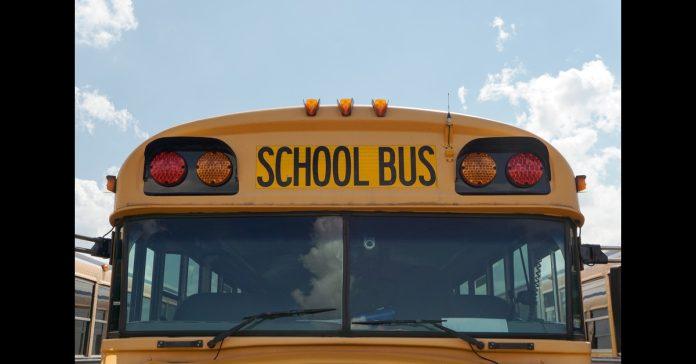Fuel efficiency is a crucial factor when it comes to operating school buses. These vehicles consume a significant amount of fuel daily, as they transport students from various locations to their designated destinations. To ensure smooth operations and cost-effective transportation, it’s essential to prioritize fuel conservation. While many school bus drivers now utilize monitoring systems to track fuel economy, there are several other strategies that can further enhance efficiency. In this article, we will explore twelve tips for improving fuel efficiency on school buses.
1. Condition of the Tires
The quality and condition of the tires greatly impact fuel consumption on a school bus. Opting for high-quality, long-lasting tires, such as the Mahindra Cruzio School bus tires, is essential. School buses often travel on rugged terrains, and using subpar tires can significantly reduce fuel efficiency. Ensure that the tires are properly inflated to navigate rocky roads without incident. Under-inflated or over-inflated tires can hamper economy and shorten the tires’ lifespan.
2. Driving Behavior
The driving behavior of bus drivers plays a crucial role in fuel efficiency. Proper driving techniques can maximize a bus’s fuel economy. It’s important for drivers to adhere to guidelines for good acceleration and idling. Idling for extended periods can decrease engine efficiency and fuel economy by approximately 1% per hour. Installing an idle shutdown timer on the bus can help reduce idling time and improve fuel efficiency. Consistently maintaining the recommended speed limit after ignition can enhance engine efficiency and prevent carbon accumulation, which can lead to decreased fuel efficiency. It is also important for drivers to apply brakes judiciously, as frequent braking negatively impacts fuel efficiency. Keeping speed in check and using brakes only when necessary can significantly improve fuel economy.
3. Axle Alignment
Proper axle alignment is another way to save fuel on school buses. A misaligned axle can cause tire wear and tear, resulting in a 0.6% decrease in fuel economy. Regularly check and align the axle to ensure optimal performance and fuel efficiency.
4. Synthetic Lubricants
Using synthetic lubricants on the axle and transmission can enhance fuel efficiency by approximately 1%. Synthetic lubricants have the advantage of operating effectively in low air temperatures and providing better flow compared to mineral oils. However, it is crucial to use them cautiously, as excessive use can lower fuel economy.
5. Correct Specifications
When purchasing a school bus, selecting the right components and specifications significantly impacts fuel efficiency. Seek the assistance of technical professionals to install appropriate parts that enhance fuel efficiency. Always prioritize buying a bus with a fuel-efficient engine and the latest technology to ensure optimal performance.
6. Latest Diesel Engine
Diesel remains the most economical fuel option for bus engines. Modern diesel engines are far superior to their counterparts from the 1980s and 1990s. Upgrading outdated buses with new engines has become a common practice, thanks to advancements in engine technology. Diesel engines can increase mileage by 25-30%, resulting in improved fuel efficiency. For instance, the Mahindra Cruzio Staff bus, equipped with a 60-liter diesel engine, offers excellent fuel efficiency.
7. Gear Change Frequency
Avoid unnecessary gear changes whenever possible. Familiarize yourself with the routes to minimize the need for gear shifts and find alternative ways to avoid traffic congestion. Reduced gear changes lead to lower fuel consumption, ultimately improving fuel efficiency.
8. Proper Use of Air Conditioner
If the school bus is equipped with air-conditioning, use it judiciously. Excessive use of bus air-conditioners can significantly increase fuel consumption, negatively impacting efficiency. Utilize the air conditioner in an optimal manner to conserve fuel.
9. Speed Limit
Maintaining an economical speed is crucial for fuel efficiency. Higher speeds result in increased fuel consumption and decreased fuel economy. It is important for school bus drivers to adhere to speed limits and drive within the recommended range to maximize fuel efficiency.
10. Check Battery Cables
Regularly inspecting the bus’s battery cables is essential for optimal fuel efficiency. Corroded wires should be replaced promptly to ensure the proper functioning of the alternator. By maintaining the integrity of the battery cables, you can enhance the bus’s fuel efficiency.
11. Proper Maintenance
Timely servicing and maintenance of the school bus are vital for fuel efficiency. Properly maintaining the bus and adhering to the recommended maintenance schedule can improve mileage and make the bus more fuel-efficient. When purchasing a bus, it is advisable to prioritize new vehicles and check the latest bus prices to ensure you invest in the most fuel-efficient option.
12. Drive Smartly
As a school bus driver, choosing an optimal route that requires less driving can significantly reduce fuel consumption and increase efficiency. By planning routes strategically, you can minimize fuel usage and ensure that students reach school and home on time.
Conclusion
Improving fuel efficiency should be a top priority for school bus drivers. By implementing the twelve tips mentioned above, you can enhance the fuel efficiency of the bus, ultimately saving money and reducing environmental impact. Remember to prioritize tire condition, adopt proper driving techniques, align the axle correctly, use synthetic lubricants, choose the correct specifications, opt for the latest diesel engine, minimize gear changes, use the air conditioner wisely, adhere to speed limits, inspect battery cables, practice regular maintenance, and drive smartly. By following these guidelines, you can optimize fuel efficiency and contribute to a greener and more cost-effective school transportation system.
